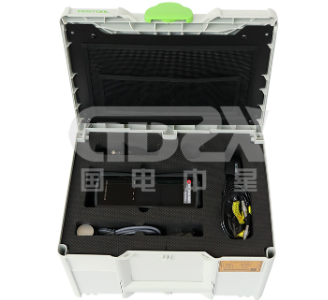NEWSnews
The principle and detection method of partial discharge detection in switchgear
Metal armored switchgear is widely used due to its mature design technology, low cost, and small footprint. However, due to limitations in manufacturing processes or levels, there are often areas with weak insulation inside. During long-term operation, partial discharge may occur due to burrs, small air gaps, and other factors, gradually leading to insulation degradation, accelerated aging of insulation materials, and ultimately insulation breakdown, resulting in equipment failures or accidents.
Conducting partial discharge measurements on switchgear equipment on site using conventional methods is not only difficult to operate but also seriously affects operating conditions, making individual measurements even more impractical. To strengthen partial discharge detection of 10-35kV high-voltage switchgear, accurately determine equipment status, and improve its operational reliability. Introduce the method of using four composite interference modes to compare the detection values of TEV technology and pulse current method under the simulated operating conditions of artificial interference sources in the field of switchgear. Summarize the relevant rules, make the measured dB value of TEV correspond to the apparent discharge C value, and then analyze the severity of insulation defects.

Principle of partial discharge detection in switchgear
Pulse current method
Due to the sensitivity of the pulse current method to sudden changes in signals and its ability to accurately detect partial discharge phenomena, the severity of partial discharge can be determined by the statistical characteristics of the pulse current and the actual measured waveform. However, for on-site measurements outside the laboratory, due to interference from radio and other equipment electromagnetic fields, the values measured by this method cannot accurately reflect the true partial discharge value of the test object, and the operation is difficult and not suitable for on-site use.
Transient to ground voltage method
According to the principle of electromagnetic induction, when electromagnetic waves propagate in space, they will generate an induced current on the conductor when encountering it, and the frequency of the induced current is the same as the frequency of the excitation electromagnetic wave. Therefore, the electromagnetic waves generated by partial discharge will excite pulse currents on the inner surface of the cabinet grounding shield, and the amplitude, frequency, and other parameters are related to the characteristics of the electromagnetic wave parameters generated. According to the basic principle of electromagnetic shielding, pulse current will eventually emanate from the discontinuity of the switchgear and then propagate along the outer surface of the metal cabinet to the ground. High frequency induced pulse current generates instantaneous potential fluctuations on the metal casing, forming a transient Earth Voltage (TEV).
When partial discharge occurs in the switchgear, the discharged electricity first accumulates in the grounded metal part adjacent to the discharge point, forming current pulses and propagating in various directions. Under the skin effect, high-frequency pulse currents only propagate within a very thin layer of the conductor surface. As shown in Figure 1, these pulses can be detected using capacitive sensors, thereby reflecting the partial discharge situation.
GDZX is a professional manufacturer of secondary protection testing equipment, with a wide variety of instrument and equipment types to choose from. GDZX serves you at 4000-828-027. To learn more, visit GDZX's official website at www.gdzxdl.com.





















